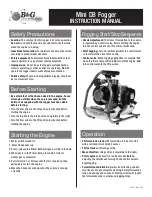
RP0200-2000
NACE International
15
Alternate Method: Lineal Conductance Values for the Casing
The preceding calibration procedure can also be used to provide the
actual lineal resistance for the casing (voltage drop
between casing test leads, divided by applied current). Then using Equation (B8), the distance from the end of the casing to
the point of contact can be calculated:
CT
CT
C1,
C1
L
R
R
L
=
(B8)
Where:
L
C1
=
Distance from end of casing to point of contact
R
C1
=
Lineal casing resistance from end of casing to point of contact
=
∆
V
1
/I
R
CT
=
Total lineal resistance of casing
L
CT
=
Total length of casing
The actual lineal resistance for the casing should be compared with the
theoretical lineal resistance for the casing, found in
Table B1.
When the test is repeated at the opposite end of the casing (End No. 2), Equation (B9) can be used to find the distance from
that end of the casing to the point of contact
CT
C2
C1,
C2
L
R
R
L
=
(B9)
For the test results to be accurate, R
C1
+ R
C2
= R
CT
and L
C1
+ L
C2
= L
CT
. The ends of the casing are considered to be the
locations where the test leads for the potential measurements are located. The potential measured across the casing is the
potential change that occurs when current is applied.
4. Cycling the Rectifier
Purpose
Measurement of structure-to-earth potentials under
steady-state conditions of applied cathodic protection
may not provide conclusive evidence regarding the state
of electrical isolation between casing and pipeline. The
same potential measurement, if taken while the cathodic
protection rectifier is being cycled, may provide additional
information for evaluation of casing isolation conditions.
Procedure
This technique may be applied to a pipeline survey using
an interrupter in the most influential cathodic protection
rectifier unit. The location of the cycling rectifier selected
shall be sufficiently remote from the casing under test so
that anodebed voltage gradients do not influence the
measurement.
1.
Pipeline and casing potentials shall be
measured with the cathodic protection current
applied.
2.
Step 1 shall be repeated at the same instant
that the cathodic protection current is switched off.
Analysis
If the ON and OFF potentials from the casing are close in
magnitude to the ON and OFF potentials of the carrier
pipe, the presence of an electrical (metallic) short may be
indicated.
Note: If water or soil is present in the casing, this test
procedure does not give a conclusive result. In such
situations, additional testing techniques should be
employed.
5. Casing Depolarization Test
Purpose
Isolation may be verified by discharging DC from the
casing. If the two structures are not metallically
connected, a significant potential difference occurs
between the casing and carrier pipe.
Procedure
1.
A temporary metallic structure shall be
constructed laterally to, and spaced an appropriate
distance from, the carrier and casing (a spacing of
15 m [50 ft] is usually an adequate distance). Steel
rods driven into the earth or sheets of aluminum foil
in contact with the earth (usually placed in standing
water) may provide an adequate temporary structure.
Содержание CP 1
Страница 1: ...CP 1 Cathodic Protection Tester Course Manual February 2005 NACE International 2000 ...
Страница 265: ......
Страница 266: ......
Страница 267: ......
Страница 268: ......
Страница 301: ...RP0169 2002 32 NACE International ISBN 1 57590 035 1 ...
Страница 535: ...TM0101 2001 24 NACE International ISBN 1 57590 137 4 ...
















































